A Forward Future-Based Approach to Optimizing Agriculture and Climate Change Adaptation in Lower Eastern Kenya
Abstract
1. Introduction
1.1. Background
1.2. The Complex Case of Food Insecurity
1.3. Technology Driven Data for Decision Making
1.4. Global Climate Models
1.5. Defining Future Emission-Based Trajectories
2. Mapping Future Agro-Ecological Zones
Data Processing
3. Results
3.1. Changing Agro-Ecological Potential in a Changing Climate
3.2. Learning from the Current Adaptation to Improve Forward Future-Based Investments
3.3. Opportunities for Adapting and Transitioning Adaptation Strategies
3.3.1. Gendered Adaptation Mechanisms
3.3.2. Agricultural Land Consolidation and Zoning
3.3.3. Focused Diversification of Farming Systems
3.3.4. Customizing Adaptation Based on Vulnerabilities
3.3.5. Converging Technology and Indigenous Knowledge for Adaptation
3.3.6. Innovations for De-Risking Agriculture and Use of Technologies
4. Conclusions
Author Contributions
Funding
Data Availability Statement
Acknowledgments
Conflicts of Interest
Abbreviations
| AEZ | Agro-ecological zones |
| AI | Aridity index |
| CIMP5 | Coupled Model Inter-comparison Project |
| EO | Earth observation |
| FAO | Food and Agricultural Organization |
| GCM | Global climate models |
| GDP | Gross domestic product |
| GEE | Google Earth Engine |
| GHG | Greenhouse gas |
| HadGEM-ESM | Hadley Centre Earth System Models |
| IPCC | Inter-Governmental Panel on Climate Change |
| IPCC AR5 | Fifth Assessment Report of the Inter-Governmental Panel on Climate Change |
| KMD | Kenya Meteorological Department |
| KSS | Kenya Soil Survey |
| LGP | Length of the growing period |
| LR | Long rains |
| MAM | March April May |
| MR | Moisture regimes |
| OND | October November December |
| PET | Potential evapotranspiration |
| RCP | Representative concentration pathways |
| SR | Short rains |
| SRTM | Shuttle Radar Topography Mission |
References
- Breisinger, C.; Diao, X.; Dorosh, P.; Mbuthia, J.; Omune, L.; Oseko, E.; Thurlow, J. Kenya: Impacts of the Ukraine and global crises on poverty and food security. In Global Crisis Country Brief 1; International Food Policy Research Institute (IFPRI): Washington, DC, USA, 2022; pp. 1–12. [Google Scholar]
- Eichsteller, M.; Njagi, T.; Nyukuri, E. The role of agriculture in poverty escapes in Kenya—Developing a capabilities approach in the context of climate change. World Dev. 2022, 149, 105705. [Google Scholar] [CrossRef]
- Macharia, D.; Kaijage, E.; Kindberg, L.; Koech, G.; Ndungu, L.; Wahome, A.; Mugo, R. Mapping Climate Vulnerability of River Basin Communities in Tanzania to Inform Resilience Interventions. Sustainability 2020, 12, 4102. [Google Scholar] [CrossRef]
- IPCC. IPCC, 2007: Climate Change 2007: Synthesis Report; Contribution of Working Groups I, II and III to the Fourth Assessment Report of the Intergovernmental Panel on Climate Change [Core Writing Team]; Pachauri, R.K., Reisinger, A., Eds.; IPCC: Geneva, Switzerland, 2007. [Google Scholar] [CrossRef]
- Kogo, B.; Kumar, L.; Koech, R.; Endris, H.; Omondi, P.; Jain, S.; Schirmbeck, J. Observed and future precipitation and evapotranspiration in water management zones of uganda: Cmip6 projections. Land 2021, 23, 23–43. [Google Scholar] [CrossRef]
- Cairns, J.; Sonder, K.; Araus, J.; Hellin, J.; Thierfelder, C.; Prasanna, B.; MacRobert, J. Adapting maize production to climate change in sub-Saharan Africa. Food Secur. 2013, 5, 345–360. [Google Scholar] [CrossRef]
- Hassan, R.M.; Nhemachena, C. Determinants of African farmers’ strategies for adapting to climate change: Multinomial choice analysis. Afr. J. Agric. Resour. Econ. 2008, 2, 83–104. [Google Scholar]
- Ojwang, G.O.; Agatsiva, J.; Situma, C. Analysis of Climate Change and Variability Risks in the Smallholder Sector; FAO: Rome, Italy, 2010. [Google Scholar]
- Monke, E.; Argwings-Kodhek, G.; Avillez, F.; Mukumbu, M.; Pagiola, S.; Sellen, D.; Winter-Nelson, A. Agricultural Policy in Kenya; Cornell University Press: Ithaca, NY, USA, 1996; pp. 20–22. [Google Scholar] [CrossRef]
- FAO. Analysis of Climate Change and Variability Risks in the Smallholder Sector: Case Studies of the Laikipia and Narok Districts; FAO: Rome, Italy, 2010. [Google Scholar]
- Nakalembe, C.; Becker-Reshef, I.; Bonifacio, R.; Hu, G.; Humber, M.; Justice, C.; Sanchez, A. A review of satellite-based global agricultural monitoring systems available for Africa. Glob. Food Secur. 2021, 29, 100543. [Google Scholar] [CrossRef]
- Ongoma, V.; Chen, H. Temporal and spatial variability of temperature and precipitation over East Africa from 1951 to 2010. Meteorol. Atmos. Phys. 2017, 129, 131–144. [Google Scholar] [CrossRef]
- FEWS NET. Fewsnet Food Security Assessment; FEWS NET: Washington, DC, USA, 2022. [Google Scholar]
- Filho, W.L.; Oguge, N.; Ayal, D.; Adeleke, L.; da Silva, I. African Handbook of Climate Change Adaptation; Springer: Cham, Switzerland, 2020. [Google Scholar] [CrossRef]
- RCMRD. Downscaling Climate Data and Run off Projections for KIWASH Project Counties Deliverable; Technical Report; RCMRD: Nairobi, Kenya, 2018. [Google Scholar]
- Silvestri, S.; Bryan, E.; Ringler, C.; Herrero, M.; Okoba, B. Climate change perception and adaptation of agro-pastoral communities in Kenya. Reg. Environ. Chang. 2012, 12, 791–802. [Google Scholar] [CrossRef]
- Obwocha, E.B.; Ramisch, J.J.; Duguma, L.; Orero, L. The Relationship between Climate Change, Variability, and Food Security: Understanding the Impacts and Building Resilient Food Systems in West Pokot County, Kenya. Sustainability 2022, 14, 765. [Google Scholar] [CrossRef]
- Indeje, M.; Ogallo, L.; Davies, G.; Dilley, M.; Anyamba, A. Predictability of the Normalized Difference Vegetation Index in Kenya and Potential Applications as an Indicator of Rift Valley Fever Outbreaks in the Greater. J. Clim. 2006, 19, 1673–1687. [Google Scholar] [CrossRef]
- Jones, C.; Hughes, J.; Bellouin, N.; Hardiman, S.; Jones, G.; Knight, J.; Zerroukat, M. The HadGEM2-ES implementation of CMIP5 centennial simulations. Geosci. Model Dev. 2011, 4, 543–570. [Google Scholar] [CrossRef]
- Jaetzold, R.; Schmidt, H. Farm Management Handbook of Kenya (Volume II, Part C): Natural Conditions and Farm Management Information, East Kenya; Ministry of Agriculture: Nairobi, Kenya, 1983.
- Ndungu, N.; Kiema, J.; Siriba, D.; Muthike, D.; Ndungu, S. Insights from mapping 30years of change in Lower Eastern Kenya’s Agro-Ecologies. East Afr. Agric. For. J. 2022. [Google Scholar]
- Xu, C.; McDowell, N.G.; Fisher, R.A.; Wei, L.; Sevanto, S.; Christoffersen, B.O.; Weng, E.; Middleton, R.S. Increasing impacts of extreme droughts on vegetation productivity under climate change. Nat. Clim. Chang. 2019, 9, 948–953. [Google Scholar] [CrossRef]
- Ouma, A. Climate Variability and Change as Stressors in a High Potential Agriculture Zone in Kenya. Master’s Thesis, University of Nairobi, Nairobi, Kenya, 2017. [Google Scholar]
- Patel, N. Remote sensing and GIS application in agro-ecological zoning. In Satellite Remote Sensing and GIS Applications in Agricultural Meteorology, Proceedings of the Training Workshop, Dehra Dun, India, 7–11 July 2003; WMO: Geneva, Switzerland, 2003; pp. 213–233. [Google Scholar]
- Abatzoglou, J.T.; Dobrowski, S.Z.; Parks, S.A.; Hegewisch, K.C. TerraClimate, a high-resolution global dataset of monthly climate and climatic water balance from 1958–2015. Sci. Data 2018, 5, 170191. [Google Scholar] [CrossRef] [PubMed]
- FAO. Agro-Ecological Zoning: Guidelines; FAO: Rome, Italy, 1996. [Google Scholar]
- Van Zyl, J.J. The Shuttle Radar Topography Mission (SRTM): A breakthrough in remote sensing of topography. Acta Astronaut. 2001, 48, 559–565. [Google Scholar] [CrossRef]
- African Union. The Digital Transformation Strategy for Africa (2020–2030); Policy; African Union: Addis Ababa, Ethiopia, 2020; Volume 53. [Google Scholar]

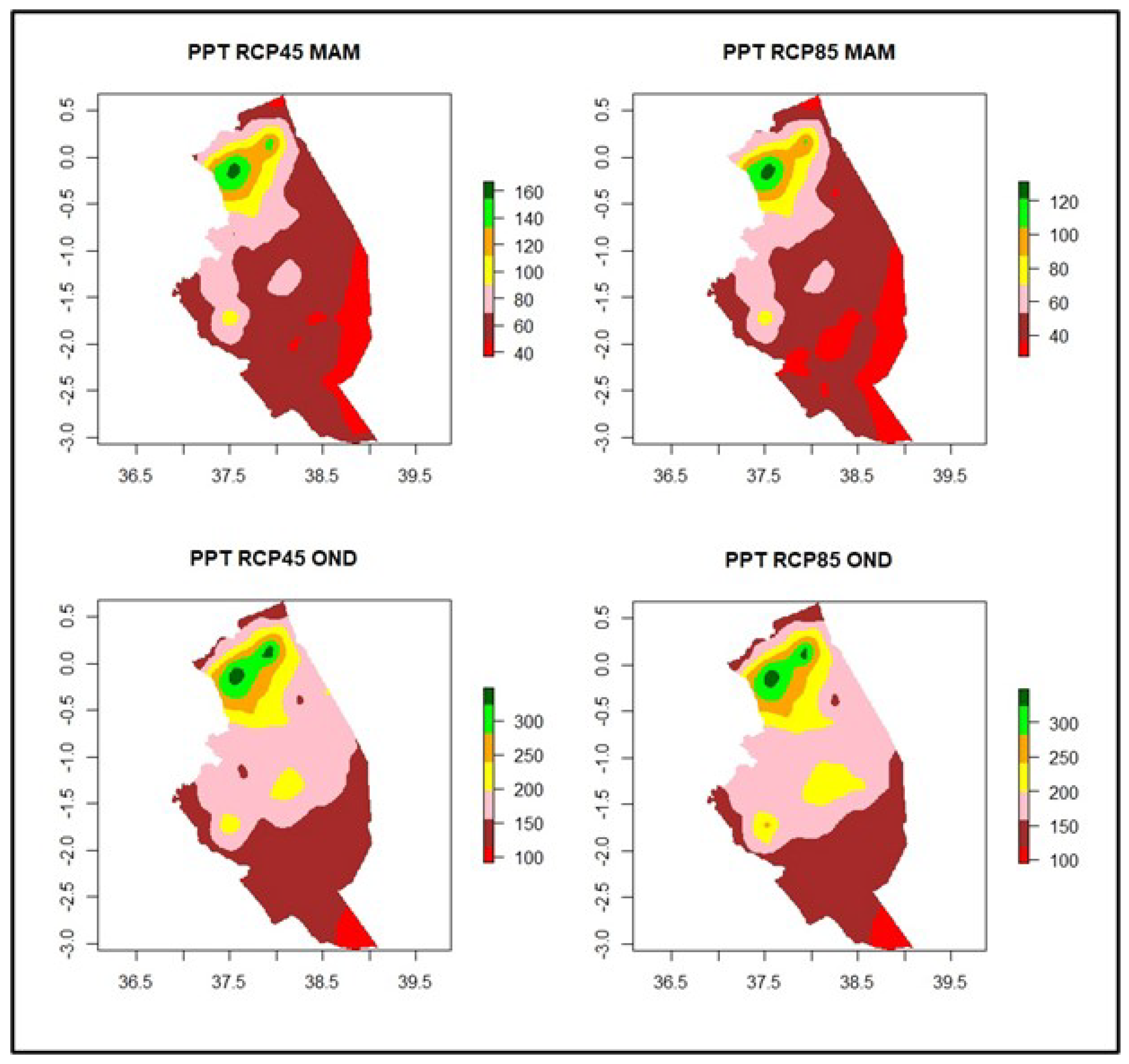


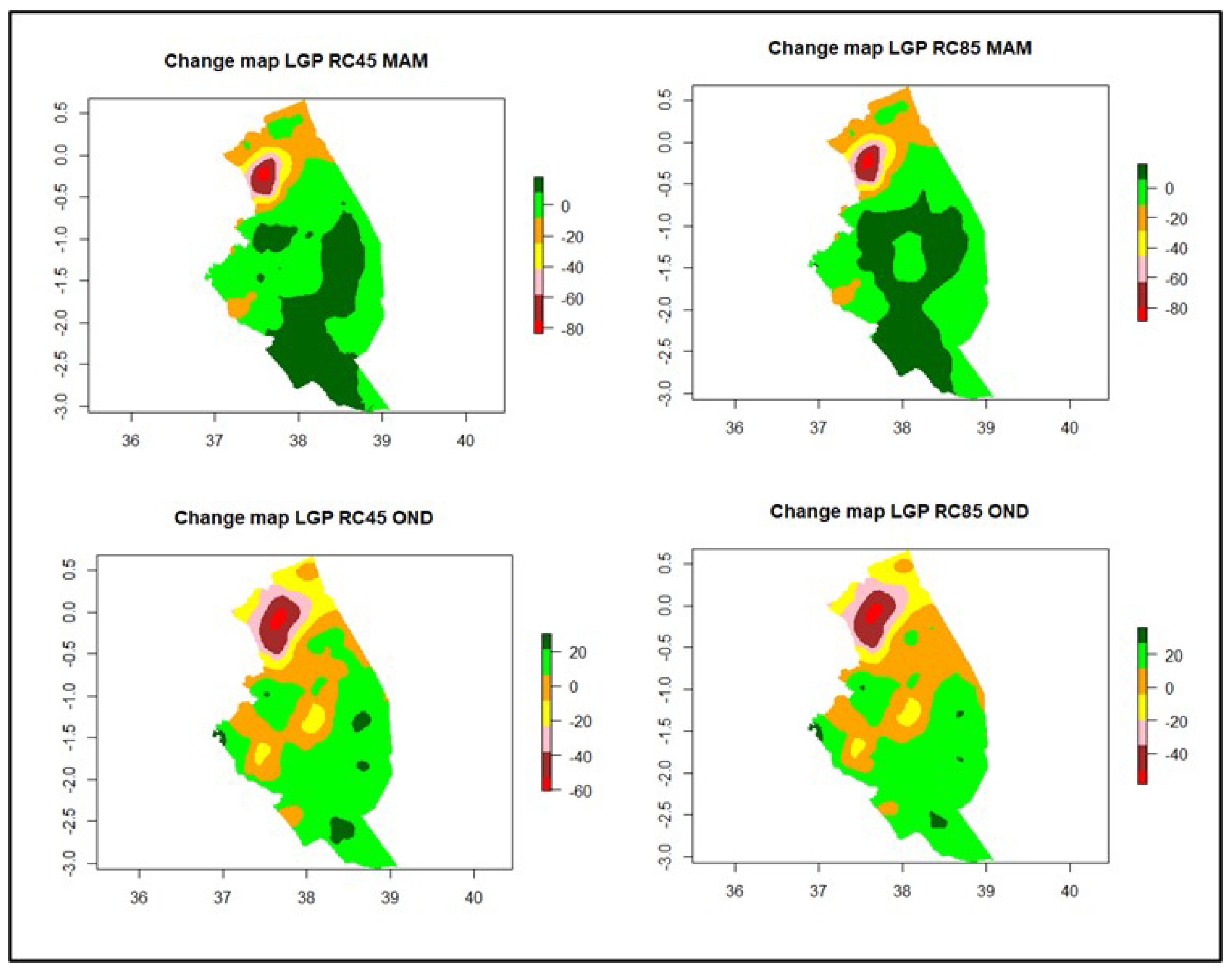

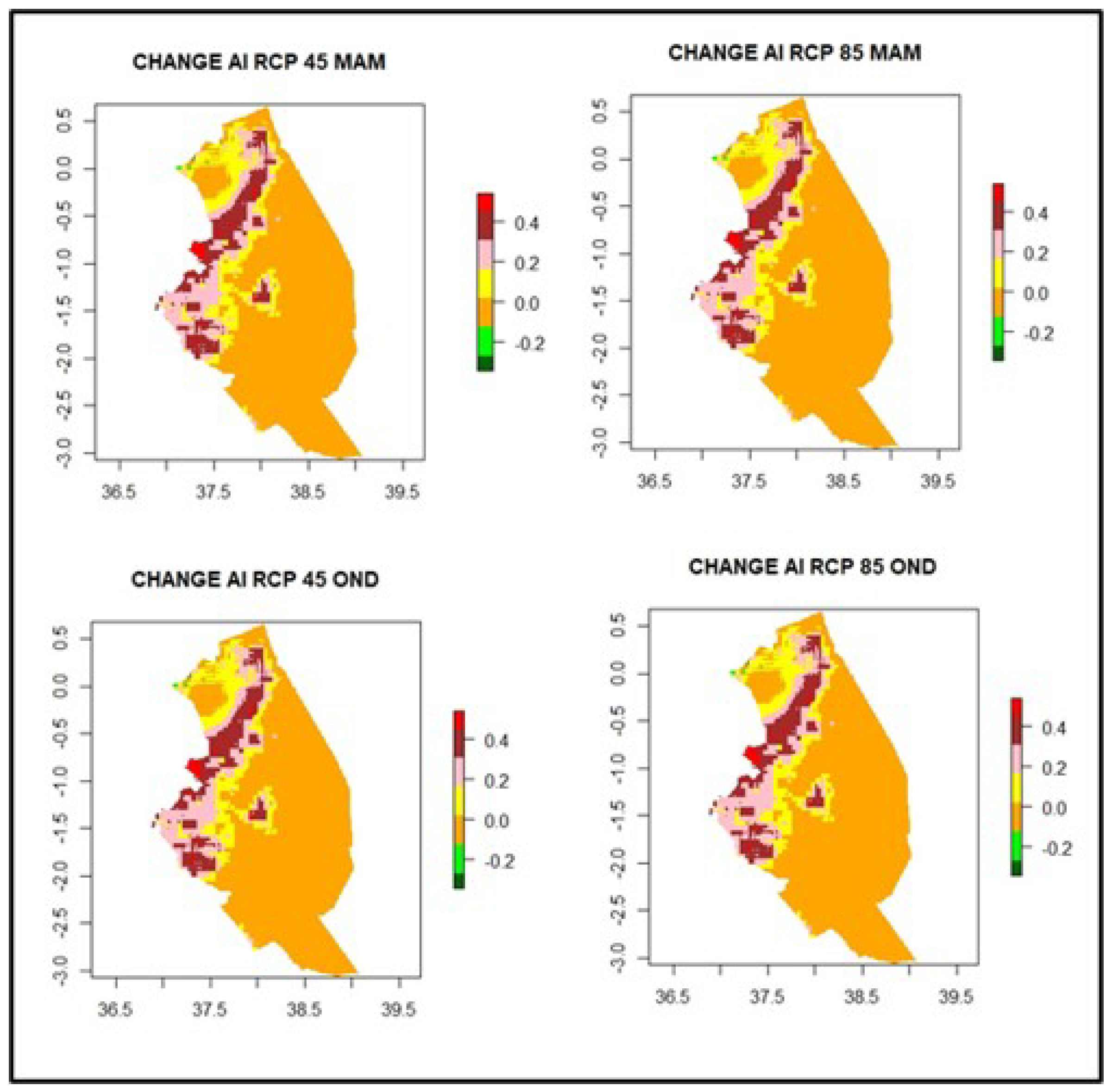

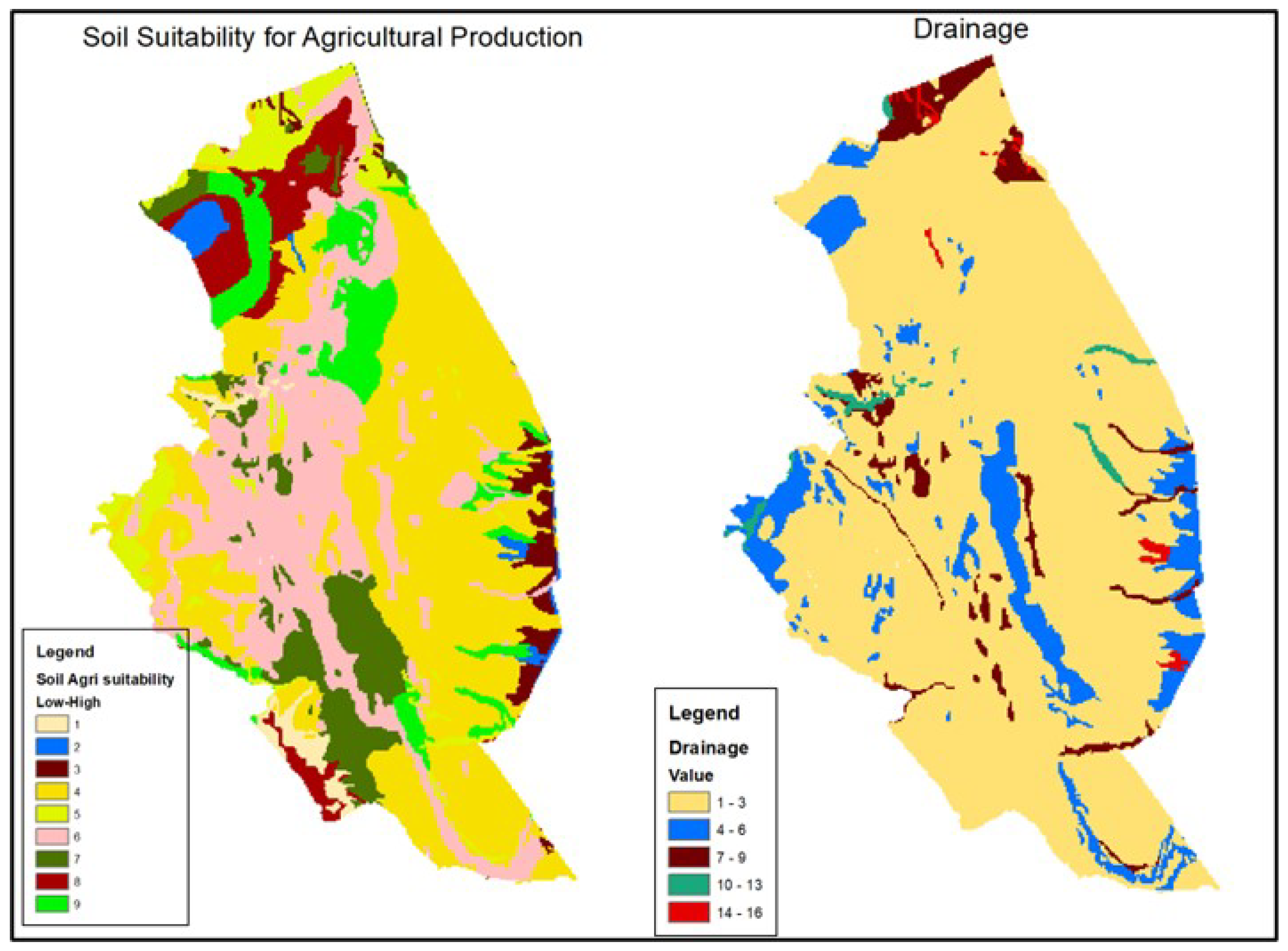
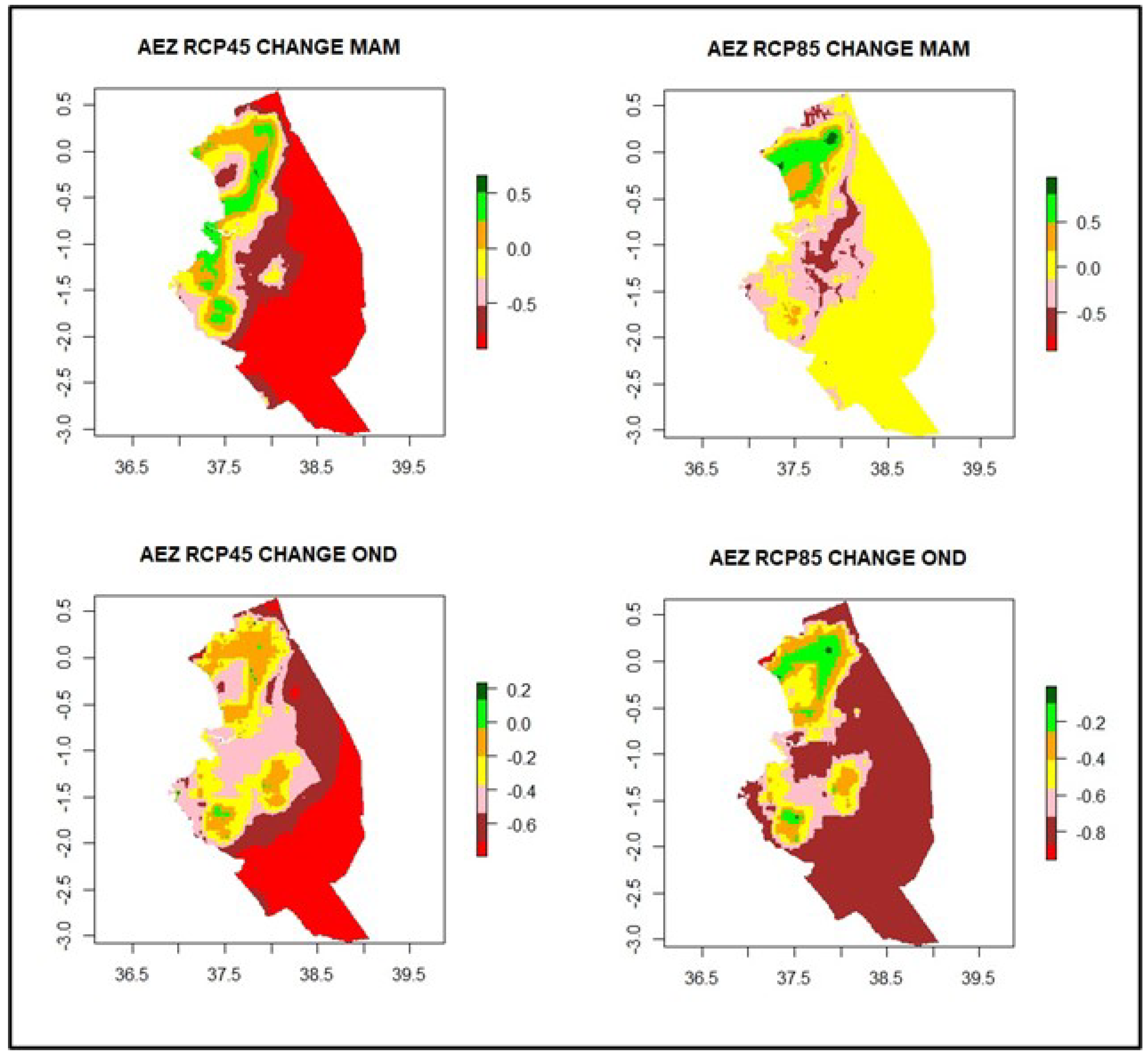

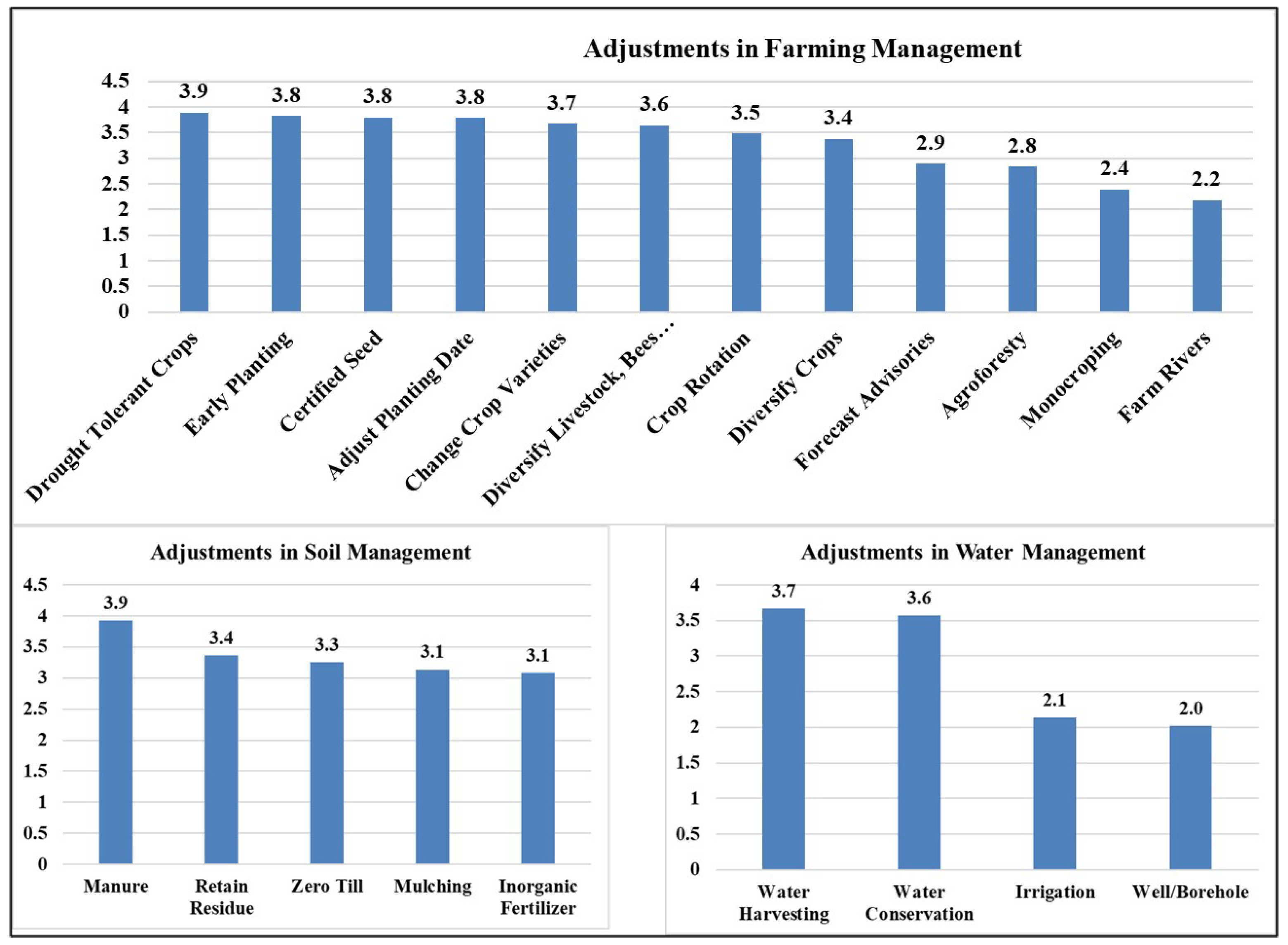


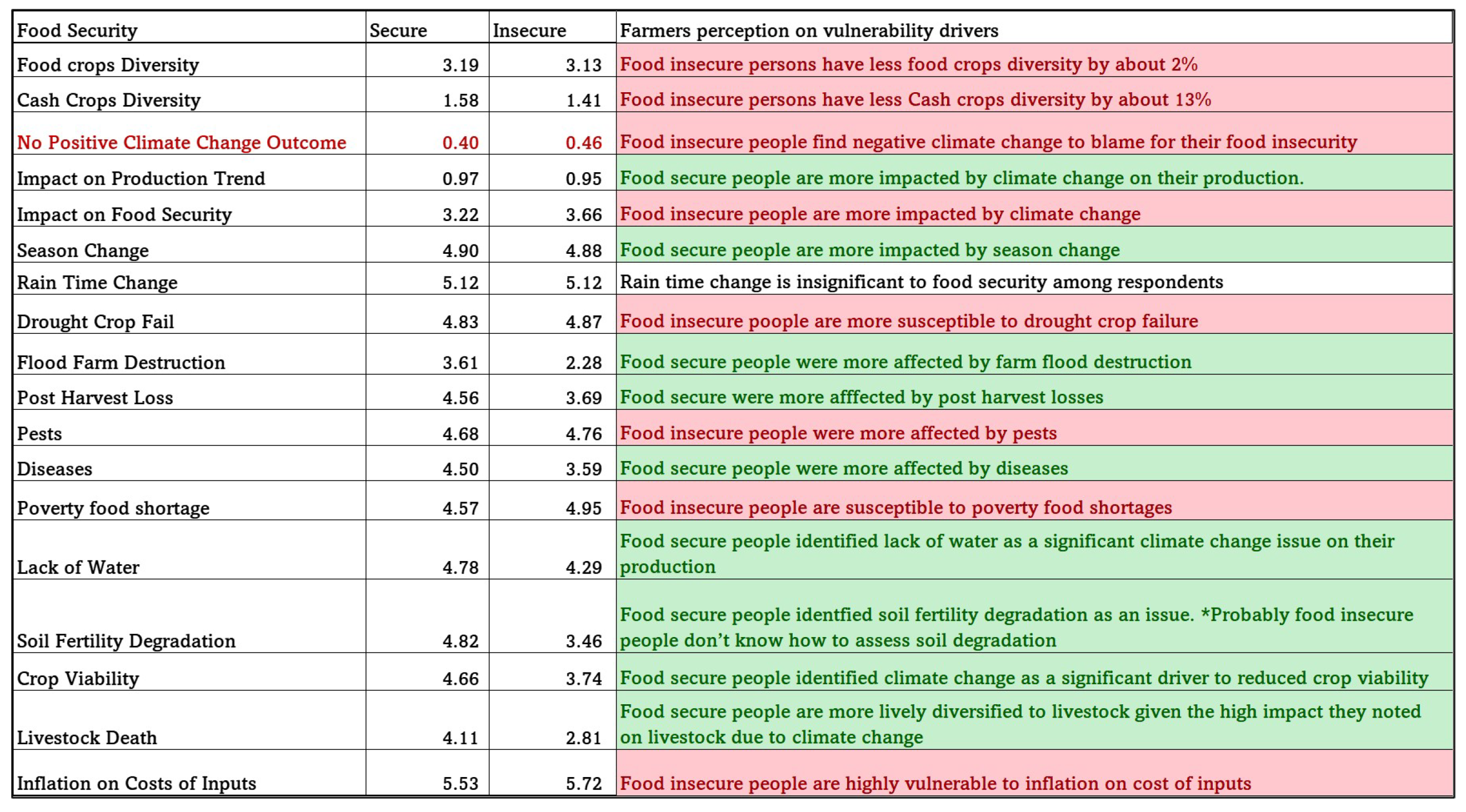

Publisher’s Note: MDPI stays neutral with regard to jurisdictional claims in published maps and institutional affiliations. |
© 2022 by the authors. Licensee MDPI, Basel, Switzerland. This article is an open access article distributed under the terms and conditions of the Creative Commons Attribution (CC BY) license (https://creativecommons.org/licenses/by/4.0/).
Share and Cite
Ndungu, L.W.; Kiema, J.B.K.; Siriba, D.N.; Muthike, D.M.; Ndungu, S.W. A Forward Future-Based Approach to Optimizing Agriculture and Climate Change Adaptation in Lower Eastern Kenya. Land 2022, 11, 2172. https://doi.org/10.3390/land11122172
Ndungu LW, Kiema JBK, Siriba DN, Muthike DM, Ndungu SW. A Forward Future-Based Approach to Optimizing Agriculture and Climate Change Adaptation in Lower Eastern Kenya. Land. 2022; 11(12):2172. https://doi.org/10.3390/land11122172
Chicago/Turabian StyleNdungu, Lilian Wangui, John Bosco Kyalo Kiema, David Nyangau Siriba, Denis Macharia Muthike, and Samuel Wamathai Ndungu. 2022. "A Forward Future-Based Approach to Optimizing Agriculture and Climate Change Adaptation in Lower Eastern Kenya" Land 11, no. 12: 2172. https://doi.org/10.3390/land11122172
APA StyleNdungu, L. W., Kiema, J. B. K., Siriba, D. N., Muthike, D. M., & Ndungu, S. W. (2022). A Forward Future-Based Approach to Optimizing Agriculture and Climate Change Adaptation in Lower Eastern Kenya. Land, 11(12), 2172. https://doi.org/10.3390/land11122172





